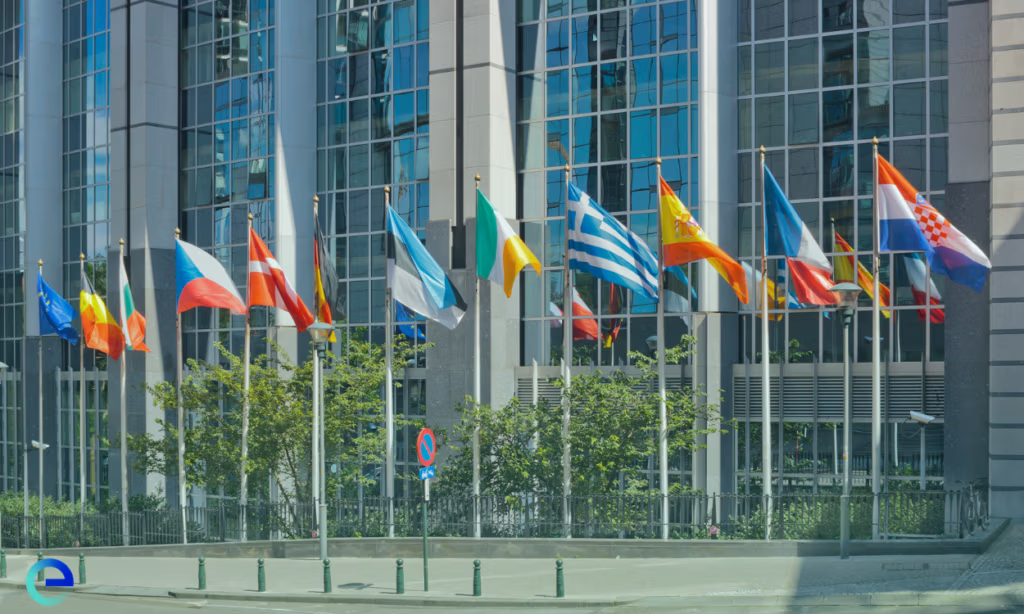
The European Union’s Corporate Sustainability Due Diligence Directive (EU CSDDD) is set to revolutionize business practices across the continent. This groundbreaking legislation aims to address human rights violations and environmental impacts within global value chains. As companies prepare for its implementation, they face the challenge of aligning their operations with these new requirements, which will have a profound effect on their strategies, processes, and relationships with stakeholders.
The EU CSDDD introduces strict due diligence obligations for businesses, requiring them to identify, prevent, and mitigate adverse impacts on human rights and the environment. The following guide explores the key impact areas for businesses, including the need to establish robust due diligence processes, address human rights and environmental concerns, and navigate the complex CSDDD landscape. By examining these critical aspects, companies can better prepare for the upcoming changes and position themselves as leaders in corporate sustainability.
The Corporate Sustainability Due Diligence Directive (CSDDD) represents a significant shift in the European Union’s approach to corporate responsibility and sustainability. As companies prepare to adapt to this new regulatory environment, understanding the key aspects of the CSDDD ensures compliance and creates a culture of sustainability.
Regulatory Context
The CSDDD is part of a broader legislative framework under the European Green Deal that aims to promote sustainable business practices across the EU. It complements existing regulations such as the EU Deforestation Regulation, the EU Conflict Minerals Regulation, and the EU Batteries Regulation. Unlike these sector-specific regulations, the CSDDD creates a comprehensive due diligence framework applicable to a wide range of industries.
The directive requires companies to identify, prevent, and mitigate potential or actual adverse human rights and environmental impacts connected with their operations, including both upstream and certain downstream activities. This approach aligns with international standards such as the OECD Guidelines and the UN Guiding Principles on Business and Human Rights, further solidifying the EU’s commitment to global sustainability goals.
Scope of Application
The CSDDD has a broad scope, encompassing both EU-based companies and non-EU companies with significant operations in the EU market. The directive applies to companies meeting specific thresholds based on employee count and turnover. For EU companies, the thresholds are more than 1,000 employees on average and a worldwide net turnover exceeding €450 million. Non-EU companies fall under the directive’s scope if they generate a net turnover of more than €450 million in the EU.
It’s important to note that the CSDDD also applies to ultimate parent companies of groups meeting these thresholds, even if the parent company itself does not meet the criteria. This ensures that large corporate groups cannot evade responsibility through complex organizational structures.
The directive’s reach extends beyond large corporations to include certain small and medium-sized enterprises (SMEs) operating in high-impact sectors. This approach acknowledges that sustainability risks are not exclusive to large companies and strives to establish equitable conditions throughout the EU market.
Key Compliance Deadlines
The implementation of the CSDDD follows a phased approach, allowing companies time to adapt their processes and systems. The key compliance deadlines are set as follows:
This gradual implementation allows for a smooth transition and gives companies time to develop and refine their due diligence processes. It’s pivotal for businesses to start preparing well in advance of these deadlines to ensure they can meet the directive’s requirements effectively.
Companies should be aware that Member States may implement the directive differently or even introduce stricter requirements. This potential for “gold-plating” means that businesses operating across multiple EU countries may need to adapt their compliance strategies to meet varying national standards.
The Corporate Sustainability Due Diligence Directive (CSDDD) requires companies to establish comprehensive due diligence processes to identify, prevent, and mitigate adverse human rights and environmental impacts.
Risk Identification
The first step in implementing a well-built due diligence process is to identify and assess potential risks and impacts. This process involves:
Companies should prioritize risks according to their severity and likelihood, focusing on areas with the highest potential for negative impacts. This risk-based approach allows companies to allocate resources effectively and address the most critical issues first.
Impact Mitigation
Once risks have been identified, what follows next is implementing measures to prevent, mitigate, or bring an end to adverse impacts. The CSDDD outlines several actions companies should take:
Companies should also establish accessible and transparent complaint mechanisms for individuals and organizations to report legitimate concerns about actual or potential adverse impacts related to the company’s operations or those of their subsidiaries and business partners.
Ongoing Monitoring
For effective due diligence measures, companies must establish systems for ongoing monitoring and assessment. This includes:
Companies should also engage in meaningful stakeholder engagement, consulting with affected parties at various stages of the due diligence process. This engagement should be based on sufficient, high-quality information to allow stakeholders to fully participate in the process.
It’s important to note that the CSDDD introduces the obligation of means rather than the obligation of results. Companies are not expected to guarantee that adverse impacts will never occur, but they are required to evaluate whether they are capable of achieving the objectives of due diligence.

The Corporate Sustainability Due Diligence Directive (CSDDD) places a significant emphasis on addressing human rights and environmental impacts throughout a company’s operations and value chain. This section explores the key components of this process, including assessment methodologies, stakeholder engagement, and remediation strategies.
Assessment Methodologies
Companies within the scope of the CSDDD are required to implement clear assessment methodologies to identify and evaluate potential and actual adverse impacts on human rights and the environment. This process involves a comprehensive analysis of a company’s own operations, those of its subsidiaries, and those of its business partners throughout the chain of activities.
There should be a prioritization of risks according to their severity and likelihood, allowing for effective resource allocation and addressing the most critical issues first. This risk-based approach enables companies to develop targeted strategies for prevention, mitigation, and remediation.
For a thorough assessment, companies should consider utilizing a combination of methods, including:
Despite their widespread use, social audits should not serve as a replacement for comprehensive human rights due diligence. Companies need to employ a smart mix of assessment methods tailored to their specific circumstances and risk profile.
Stakeholder Engagement
Meaningful stakeholder engagement is a key component of the CSDDD and instrumental in addressing human rights and environmental impacts effectively. Article 13 of the directive mandates companies to engage with stakeholders throughout the due diligence process, particularly during the identification of impacts, development of prevention and corrective action plans, and decision-making regarding business relationships.
A company’s operations can affect the rights or interests of individuals, groups, or communities, such as employees, trade unions, consumers, and civil society organizations, which are defined as stakeholders. The more relevant and comprehensive information is communicated to stakeholders, the better it allows them to participate fully in the engagement process.
To ensure effective stakeholder engagement, companies should:
By encouraging meaningful stakeholder engagement, companies can gain valuable insights into potential risks and impacts, develop more effective mitigation strategies, and build trust with affected communities.
Remediation Strategies
The CSDDD introduces a strong framework for remediation, requiring companies to address adverse impacts they have caused or contributed to. Article 12 of the directive obliges companies to provide remediation when they have caused or jointly caused an actual adverse impact.
Remediation strategies should focus on restoring affected individuals, communities, or the environment to a situation as close as possible to what it would have been had the adverse impact not occurred. This may include financial or non-financial compensation, as well as other forms of remediation such as public apologies, restitution, or guarantees of non-repetition.
Key elements of effective remediation strategies include:
Companies should also be prepared to cooperate with judicial mechanisms and provide access to remedies through courts when necessary. The CSDDD allows affected individuals and communities to sue companies for damages they are directly responsible for, empowering rights holders to seek justice in EU courts.
By implementing comprehensive assessment methodologies, engaging meaningfully with stakeholders, and developing effective remediation strategies, companies can better address human rights and environmental impacts in line with the CSDDD requirements.
To wrap up, businesses face the challenge of putting solid due diligence processes into action, tackling human rights and environmental issues, and navigating the complex CSDDD landscape. By focusing on these key areas, companies can better prepare for the upcoming changes and position themselves as leaders in corporate sustainability. This proactive approach not only ensures compliance but also contributes to building more sustainable and responsible business practices in the long run.
FAQs
Q: How does the EU support businesses?
A: The EU assists small businesses via local, regional, or national authorities. Additionally, financial intermediaries like banks and venture capital firms offer EU-guaranteed loans, lease finance, and equity funding.
Q: What are the consequences for failing to comply with the CSDDD?
A: Each EU country has a designated supervisory authority responsible for enforcing the CSDDD. Penalties for non-compliance can include public disclosure of the company’s non-compliance (“naming and shaming”) and fines up to five percent of the company’s net worldwide turnover.
Q: What does the CSDDD cover?
A: The CSDDD requires companies to conduct thorough due diligence on human rights and environmental impacts. This includes examining their own operations, those of their subsidiaries, and those of their business partners throughout their activity chains.
Q: Is compliance with the CSDDD obligatory for companies?
A: Yes, the CSDDD mandates that affected companies identify and address significant adverse impacts on the environment and human rights within their operations, those of their subsidiaries, and their supply chains.
